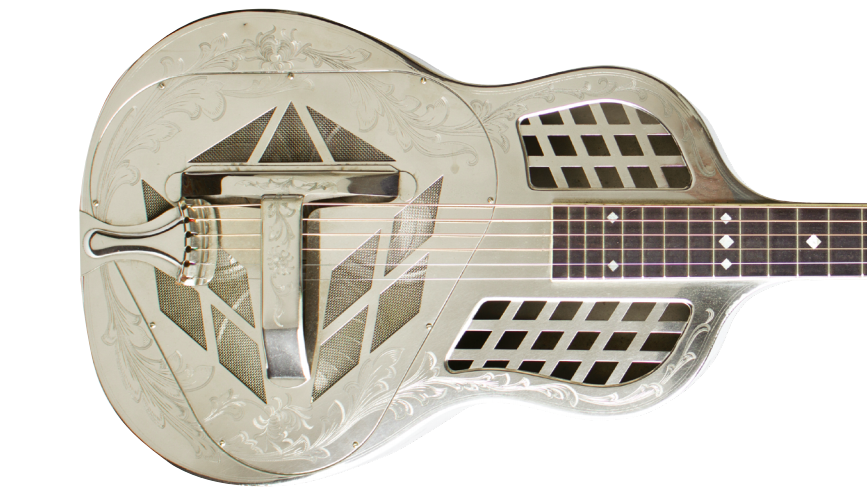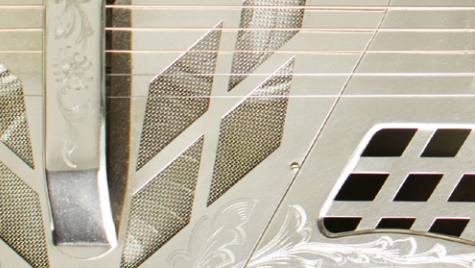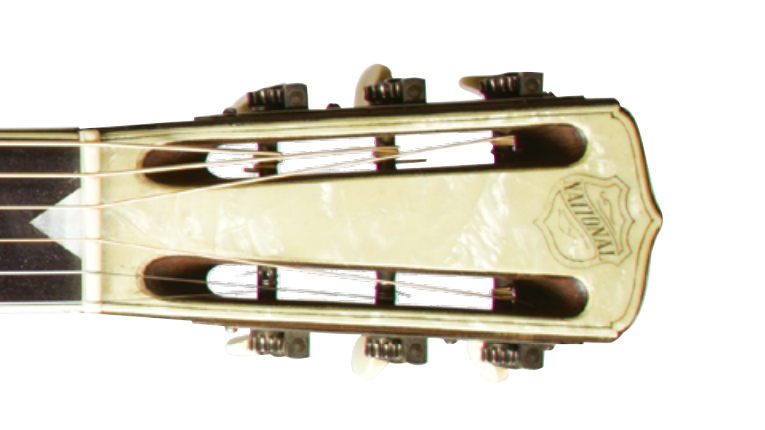Classic Gear: 1929 National Tricone Style 4 Resonator
This granddaddy of resonators was National’s top-of-the-line instrument.

Is there anything more glamorous, exotic and evocative than a vintage National resonator guitar? We would argue there is not, and when it’s a rare, ornate Style 4 National Tricone from 1929 like this one, the swoon factor is right off the charts. Less common than the single-cone resonator guitar, the Tricone is nevertheless the original and true granddaddy of the form and remains a sweetly toneful music maker today.
After being the underdog of the music world in the late 1800s and early 1900s, the guitar starting looking for more respect – and more volume. But in the 1920s, the technology for electronic amplification of guitars was still being developed. Then, in 1927, Los Angeles-based instrument maker John Dopyera, metal fabricator Adolph Rickenbacker, and musician and inventor George Beauchamp collaborated on a revolutionary guitar that had the equivalent of mechanical speaker cones built right into the body.

The cones were triggered acoustically by the vibration of the strings translated through a three-legged bridge. Their motion broadcast those waves as a louder representation of themselves, a process similar in principle to that of loudspeakers.
Created and sold by Dopyera and Beauchamp’s National String Instrument Corporation, the resonator guitar became popular with slide players amid the Hawaiian music craze of the 1920s and ’30s, the biggest outlet for guitar music at the time. Many National guitars, like this one, were made with square necks because they were intended to be played lap style, with a metal slide. Metal-bodied resonator guitars have been synonymous with the sound of slide guitar ever since, though their smooth, rich, hauntingly reverberant and slightly metallic sound has been applied to blues guitar more often from the 1940s onward.
The gorgeous example featured here is in National’s elegant, top-of-the-line Style 4 dress. The body is made from German silver, also known as nickel silver (an alloy of copper, zinc and nickel), which has been engraved front and back with flowing chrysanthemums that were purportedly designed by Beauchamp himself. Other decorative highlights include the pearloid headstock facing and diamond fretboard inlays.

Shortly after this guitar was made, National focused on producing single-cone resonators, which were more cost-effective to build, although tricone production continued for several years. While the tone of the two varieties is similar, most players who have experienced both consider the tricones to be a little sweeter, smoother and mellower than the guitars equipped with a single larger cone. Those, on the other hand, tend to work well when a lot of bite and sting is needed for more raw, edgy styles of Delta-influenced blues.
Shortly after this guitar’s production, each of the men involved in its creation would become influential in the birth of the electric guitar. Rickenbacker launched his own brand, partnering with Beauchamp, who co-invented the Rickenbacker horseshoe pickup with John Barth. Dopyera formed the Dobro company, which also made resonator guitars, and went on to co-found Valco, which made guitars and/ or amplifiers for brands like Supro, Gretsch and Oahu.
All the latest guitar news, interviews, lessons, reviews, deals and more, direct to your inbox!
Between them, these pioneers helped make the resonator guitars they created redundant for volume production. But for those who love the instruments, the evocative, emotive sound of spun-aluminum cones resonating from within a hollow German-silver guitar body has never been equaled.
Essential Ingredients
- Hollow body made from German silver (a.k.a., nickel silver)
- Heavily engraved with chrysanthemum etchings
- Square neck profile for Hawaiian-style playing
- Three resonator cones made from spun aluminum
- Slotted headstock with pearloid facing
Thanks to Retrofret Vintage Guitars
Dave Hunter is a writer and consulting editor for Guitar Player magazine. His prolific output as author includes Fender 75 Years, The Guitar Amp Handbook, The British Amp Invasion, Ultimate Star Guitars, Guitar Effects Pedals, The Guitar Pickup Handbook, The Fender Telecaster and several other titles. Hunter is a former editor of The Guitar Magazine (UK), and a contributor to Vintage Guitar, Premier Guitar, The Connoisseur and other publications. A contributing essayist to the United States Library of Congress National Recording Preservation Board’s Permanent Archive, he lives in Kittery, ME, with his wife and their two children and fronts the bands A Different Engine and The Stereo Field.

